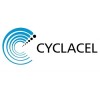
Effect of Dalcetrapib on CV Risk in a Genetically Defined Population With a Recent ACS
Acute Coronary SyndromeThis is a placebo-controlled, randomized, double-blind, parallel group, phase 3 multicenter study in subjects recently hospitalized for ACS and with the appropriate genetic profile. Subjects will provide informed consent before any study-specific procedures are performed. A separate informed consent will be allowed for an initial pre-screening genetic testing. Subjects meeting the AA genotype will then consent to the full study and confirmatory genetic testing as required. Subject enrollment may begin in the hospital and will continue following release from the hospital or may begin following release from hospital. Screening procedures may be performed at the time of the index ACS event or anytime thereafter, with the condition that randomization must occur within the mandated window (up to12 weeks after the index event). Subjects will be assessed based on their medical history. Those who are likely to qualify will undergo Genotype Assay testing to evaluate genetic determination for the presence of AA genotype.

Comparisons of the Impact of Monotherapy With Mirabegron or Tolterodine Versus Combined Treatment...
Female Patients With Overactive Bladder SyndromeTo evaluate the impact of combined therapy on the heart rate variability, compared with monotherapy in women with overactive bladder syndrome. Secondary objective is to evaluate the impact of combined therapy on bladder blood perfusion.

Thermal and Pulsed Ultrasound for Carpal Tunnel Syndrome
Carpal Tunnel SyndromeMedian Neuropathy1 moreThis study will be a Randomized controlled trial with a sample size of at least 100 individuals with carpal tunnel syndrome. Participants will be randomized to receive either thermal ultrasound, pulsed ultrasound, a combination of both, or a placebo treatment for 10 minutes, three times per week, for 4 weeks. Outcome measures will include pain intensity, functional status, and nerve conduction studies. Outcome measures will be assessed at baseline, 4 weeks, and 8 weeks.

Depemokimab in Participants With Hypereosinophilic Syndrome, Efficacy, and Safety Trial
Hypereosinophilic SyndromeThis is a 52-week, randomized, placebo-controlled, double-blind, parallel group, multicenter study of depemokimab in adults with uncontrolled HES receiving standard of care (SoC) therapy. The study will recruit patients with a confirmed diagnosis of HES and who are on stable HES therapy for at least 4 weeks prior to randomization (Visit 2). Eligible participants must have uncontrolled HES with a history of repeated flare (≥2 flares in the previous 12 months) and blood eosinophil count of ≥1,000 cells/ microliter (μL) during Screening. Historical HES flares are defined as documented HES-related worsening of clinical symptoms or blood eosinophil counts requiring an escalation in therapy. Participants who meet the inclusion and exclusion criteria will be randomized in a 2:1 ratio to receive either depemokimab or placebo while continuing their SoC HES therapy.

Low-Dose Naltrexone for the Treatment of Complex Regional Pain Syndrome
Complex Regional Pain SyndromeThe investigators are testing treatment with low-dose naltrexone (LDN) for symptom relief of complex regional pain syndrome (CRPS). Study participants will be randomly assigned to receive either LDN or placebo for a period of several weeks. During this period participants will be asked to come to several visits, which will include sensory testing, physical assessments, and questionnaires.

Laparoscopic Ventral Mesh Rectopexy Combined With or Without Stapled Trans-anal Rectal Resection...
Obstructive Defecation SyndromeChronic Constipation1 moreObstructed defecation syndrome (ODS) is a common problem in women. Rectal prolapse and rectocoele are frequently identified in patients with ODS. Surgery is the only definite treatment for those patients and is preferably performed minimally invasive. The most used procedures are laparoscopic ventral mesh rectopexy (LVMR) and stapled trans-anal rectal resection (STARR). However, high-level prospective studies on treatment strategies for ODS currently are lacking and, thus, no consensus exist regarding the optimal treatment for patients with ODS. This study aimed to compare LVMR alone and LVMR combined with STARR evaluating functional and anatomical results.

Ethosuximide and Pentoxifylline in the Treatment of Abdominal Pain Related to Irritable Bowel Syndrome...
IBS - Irritable Bowel SyndromeEthosuximide and pentoxifylline in the treatment of abdominal pain related to irritable bowel syndrome

Concussion Symptom Treatment and Education Program (C-STEP) in Post-Concussion Syndrome
Post-Concussion SyndromeThis prospective randomized intervention study aims to determine if the Concussion Symptom Treatment Program (C-STEP), a cognitive behavioral therapy, improves outcomes for children with post-concussion syndrome.

Invasive Ventilation Strategies for Neonates With Acute Respiratory Distress Syndrome Syndrome (ARDS)...
Acute Respiratory Distress SyndromeBronchopulmonary Dysplasia1 moreAcute respiratory distress syndrome (ARDS) in neonates has been defined in 2017.The death rate is over 50%. HFOV and CMV are two main invasive ventilation strategies. However, which one is better needing to be further elucidated.

A Phase I Study of CYC140, a PLK-1 Inhibitor, in Advanced Leukemias or MDS
AMLAdult7 moreA Phase I Pharmacologic Study of CYC140, a polo-like kinase 1 inhibitor, in Patients with Advanced Leukemias or Myelodysplastic Syndromes
